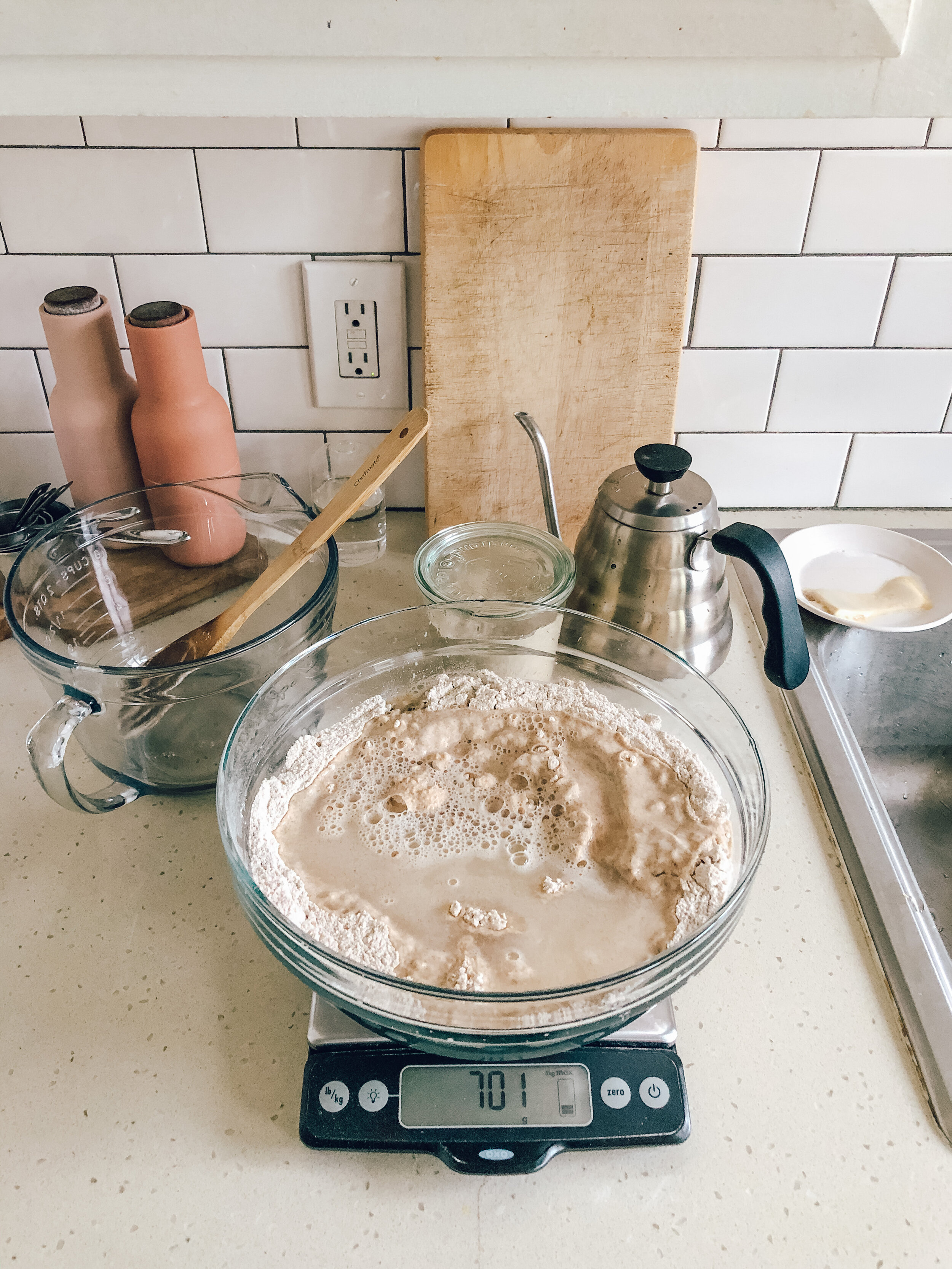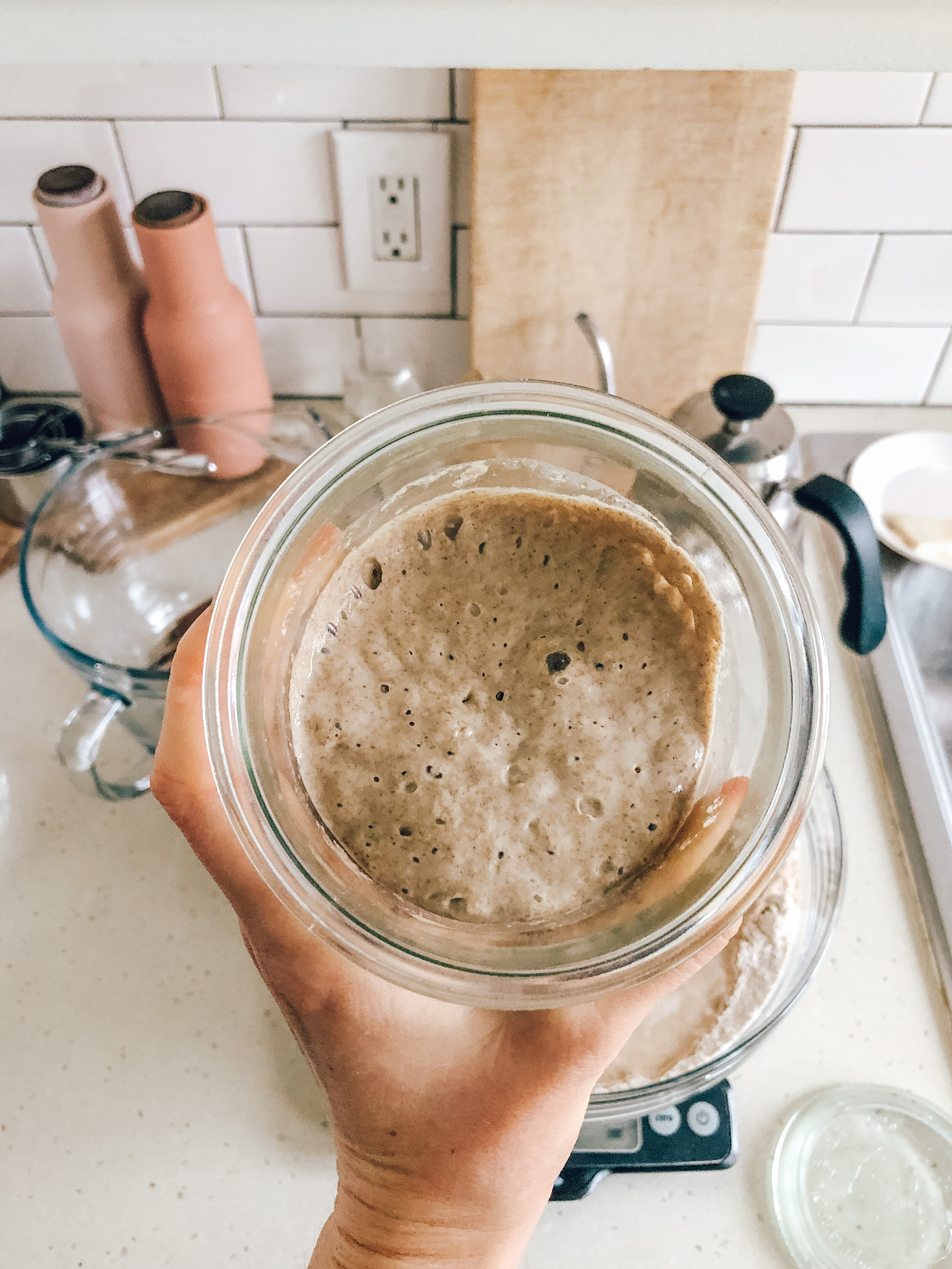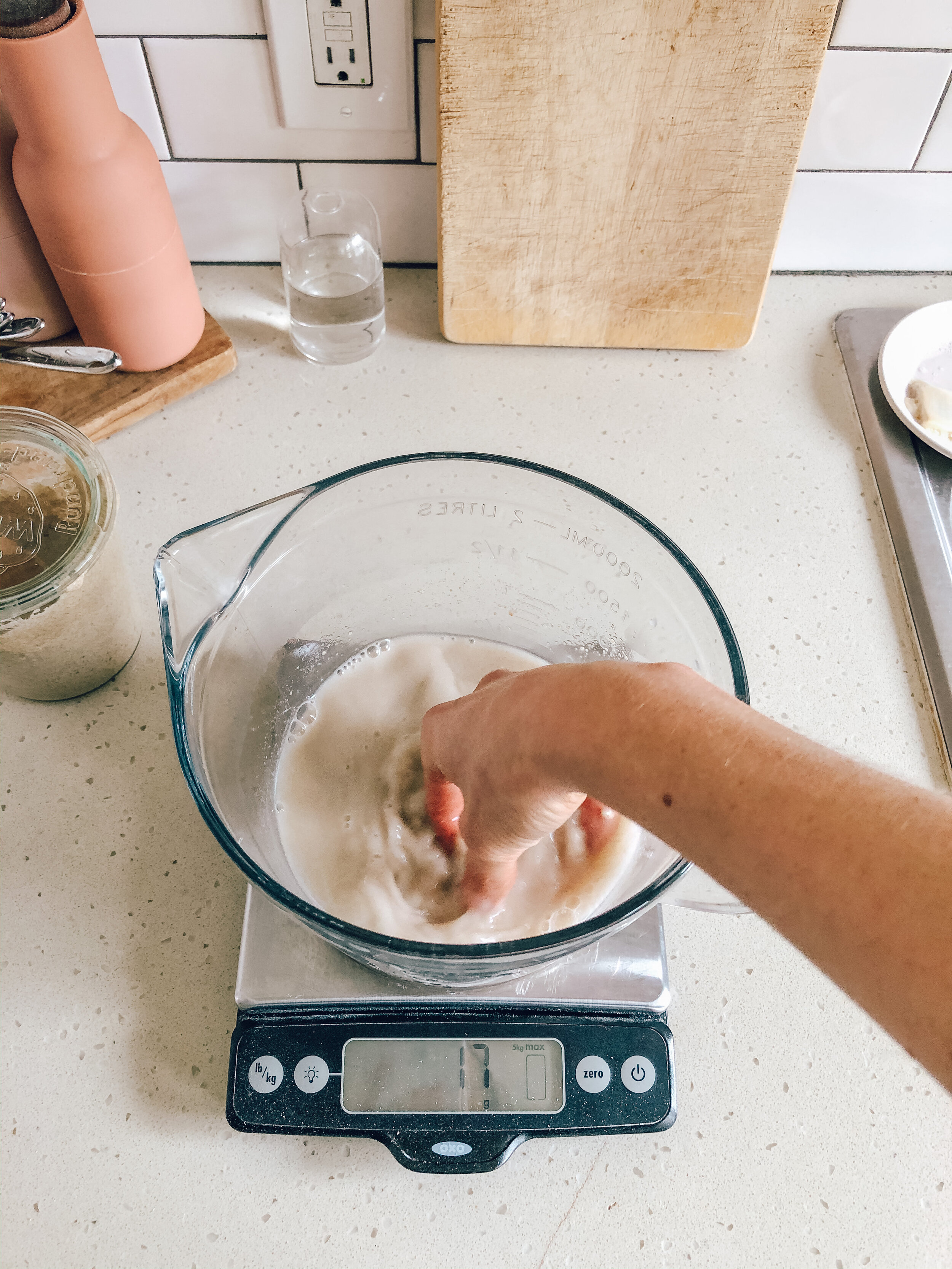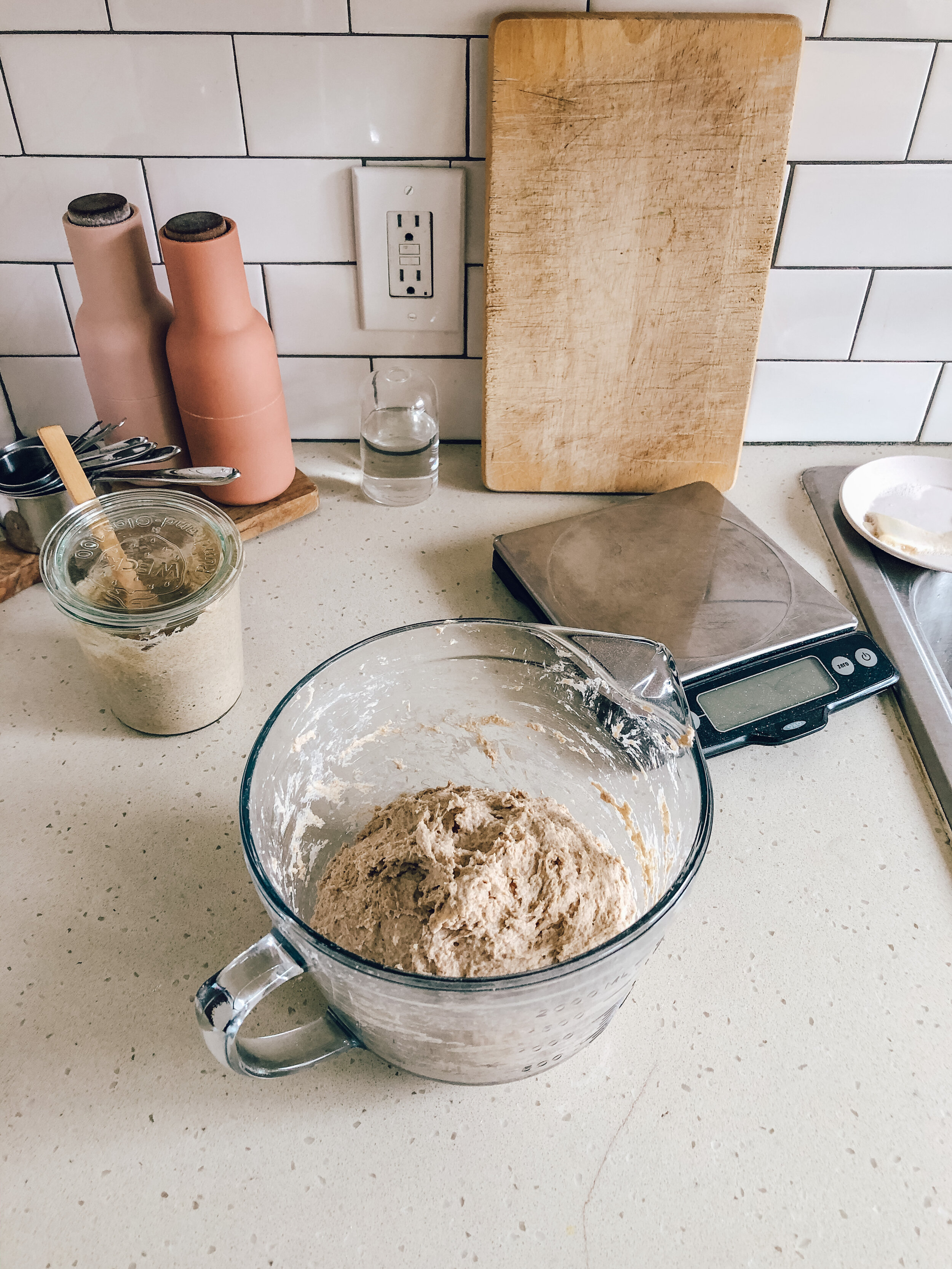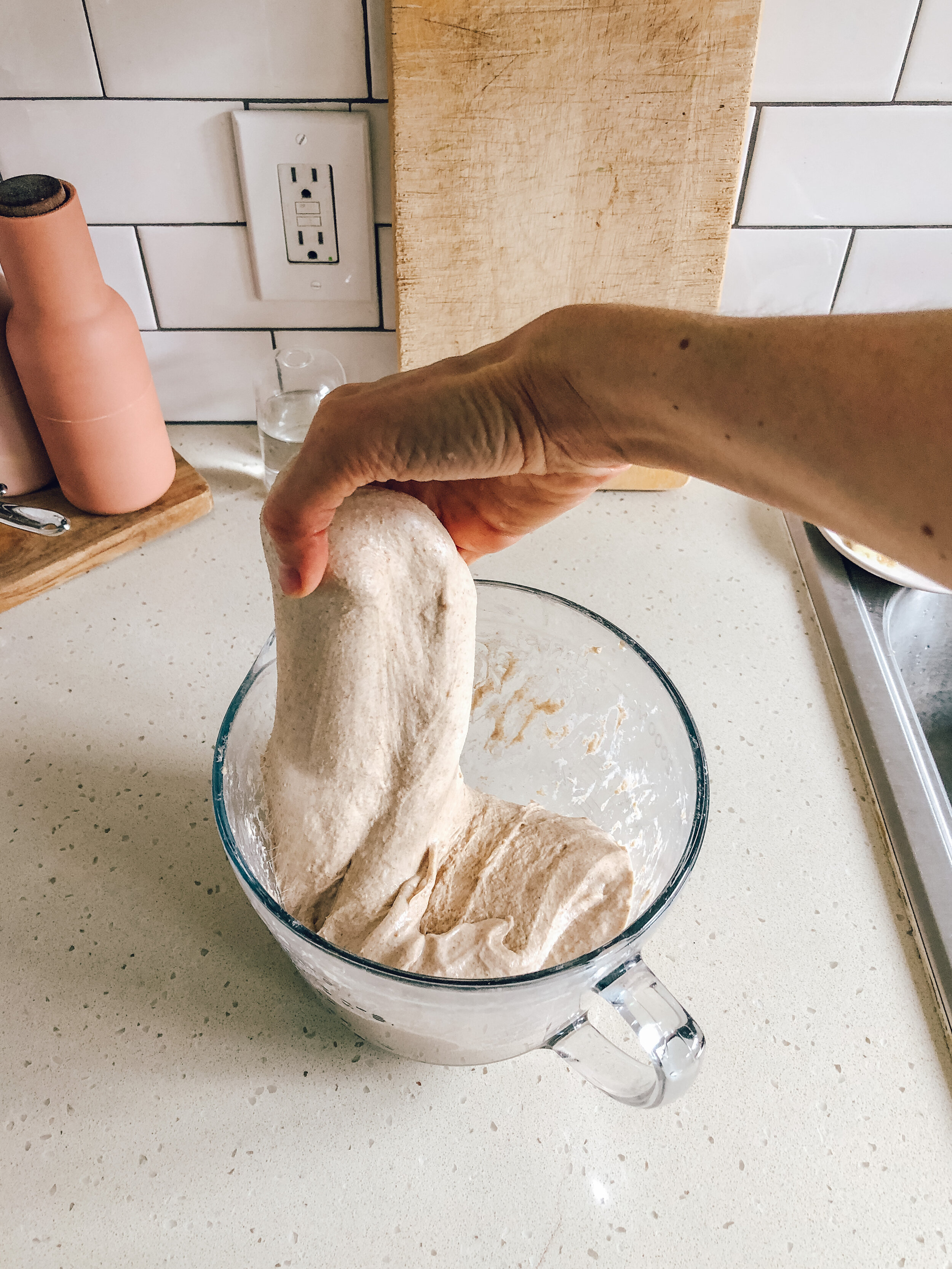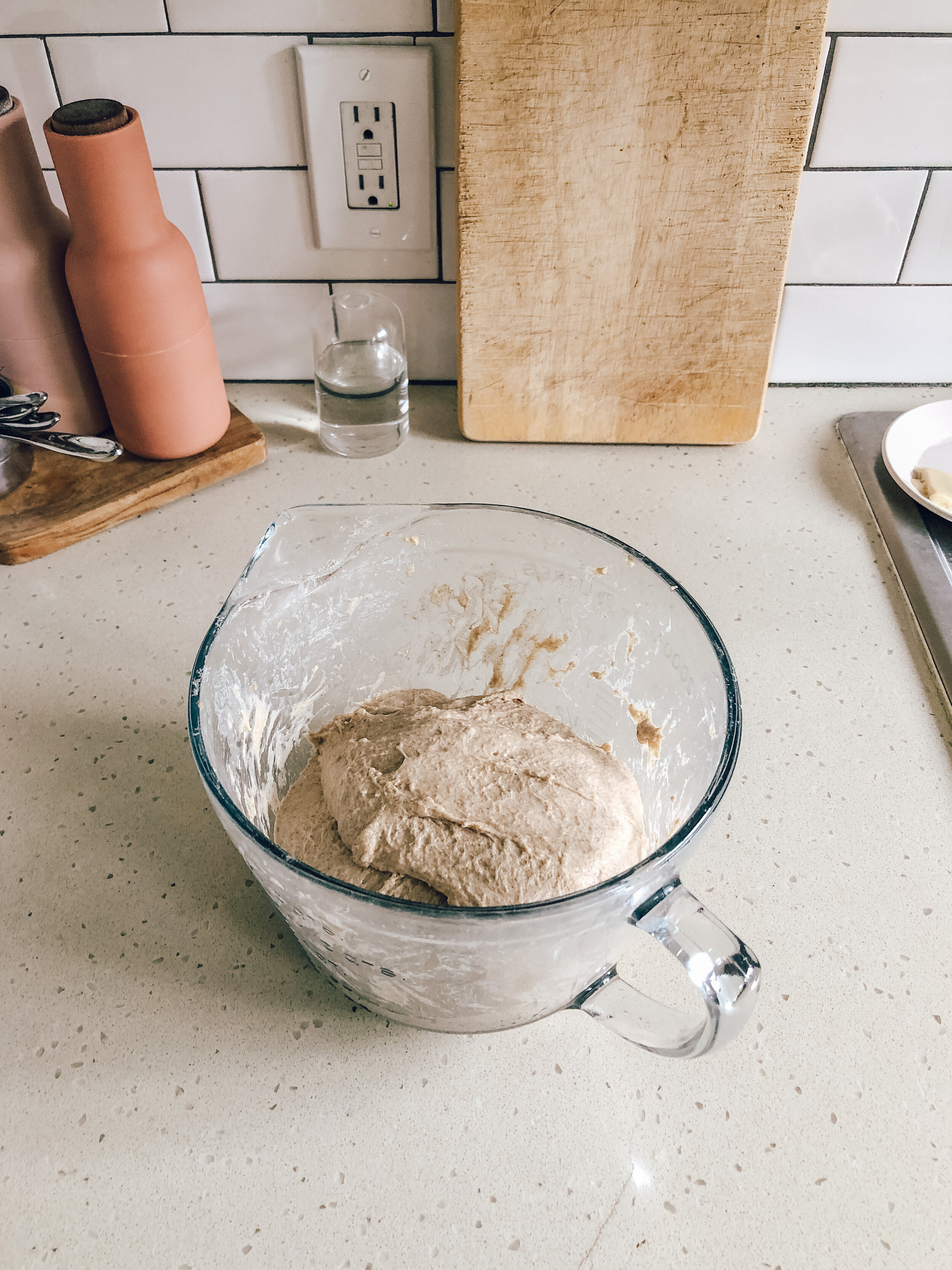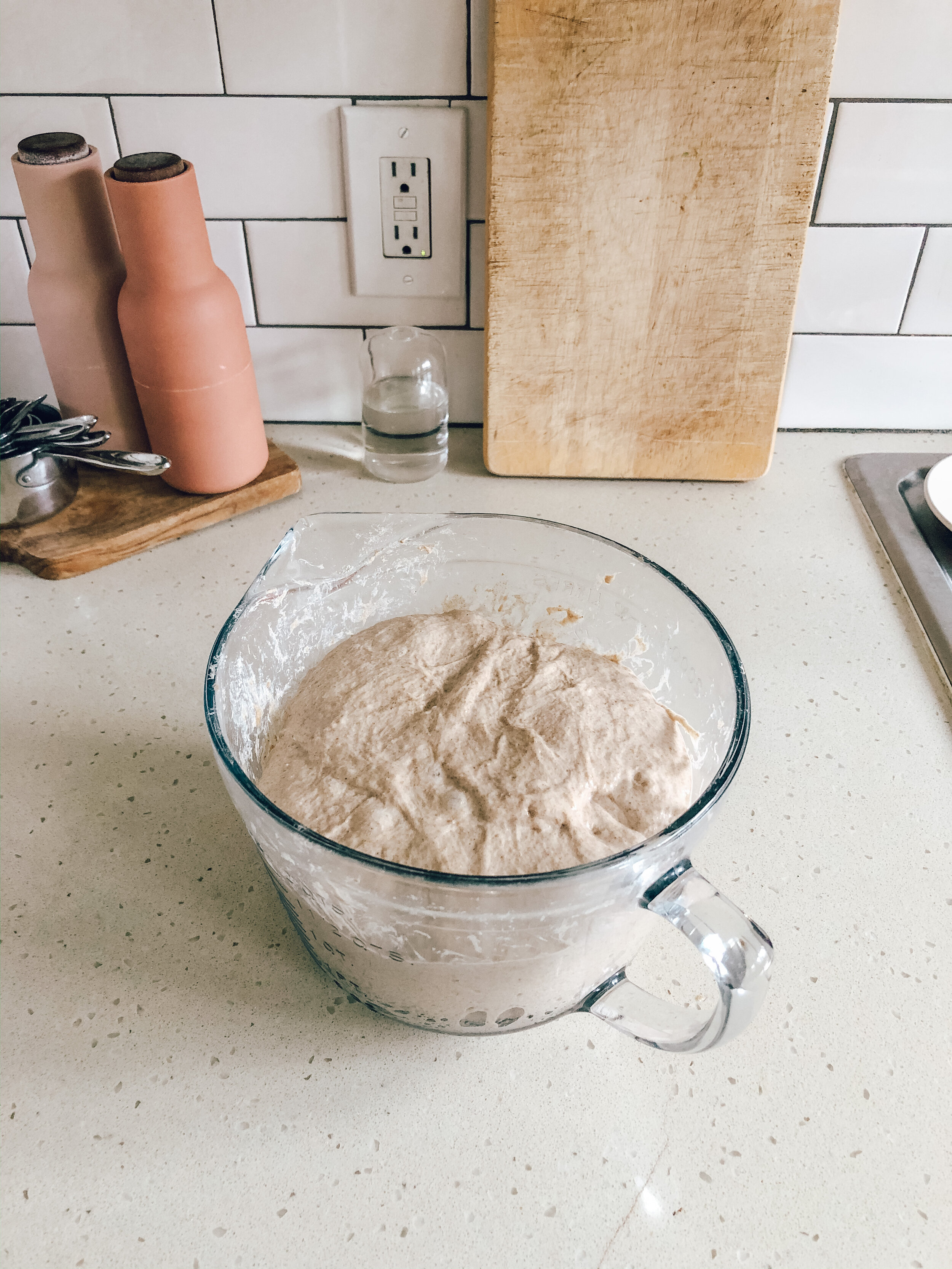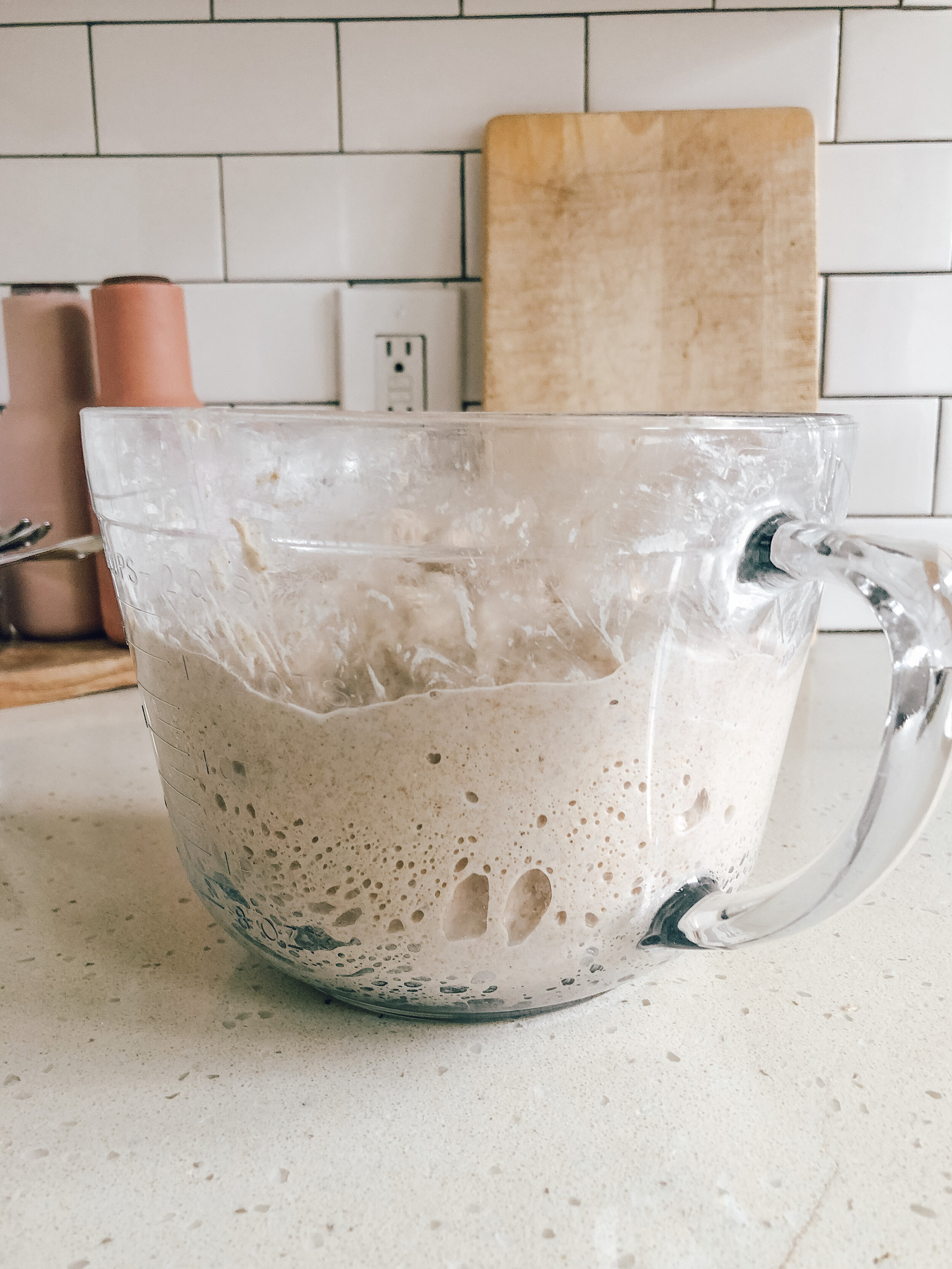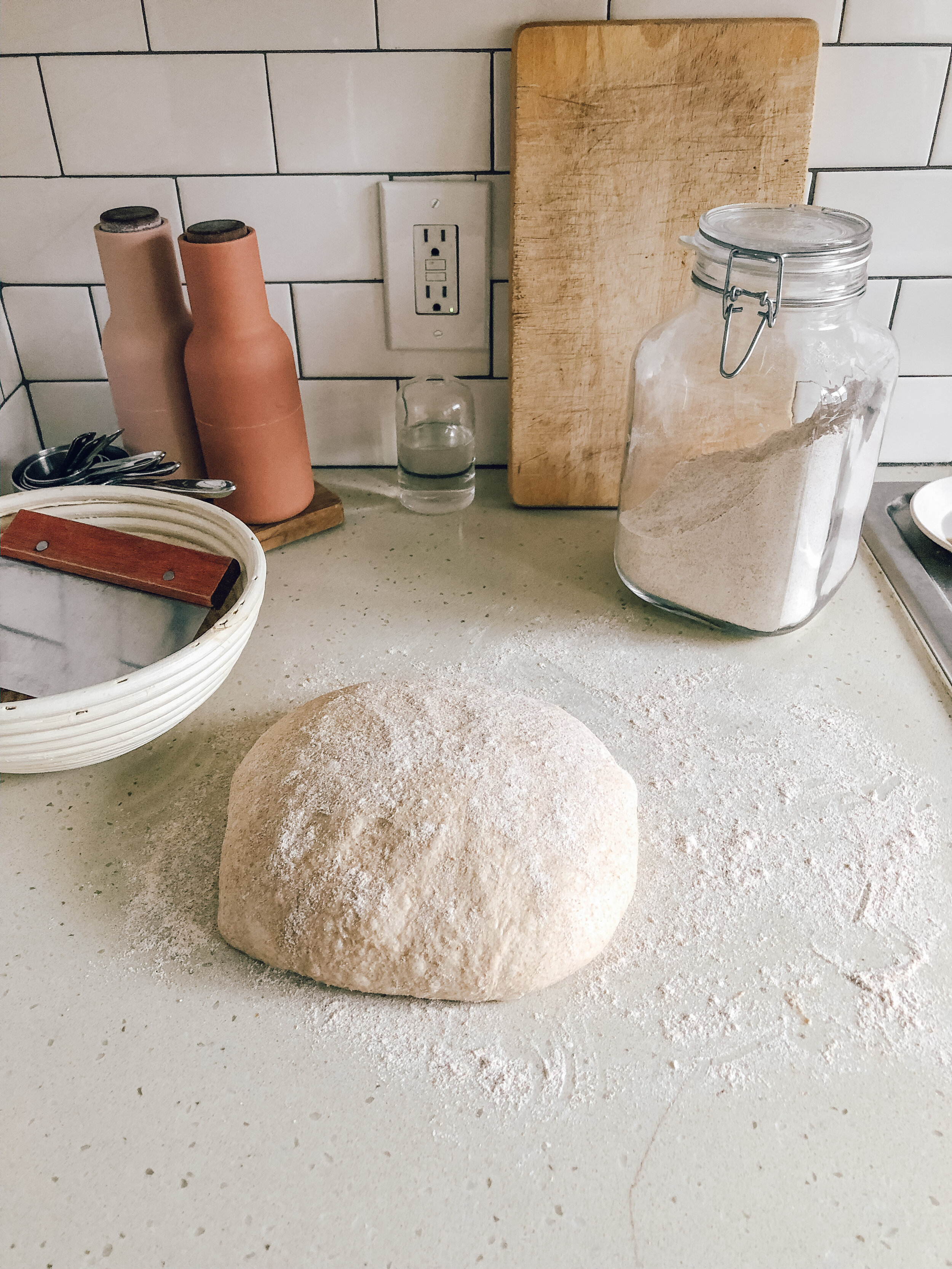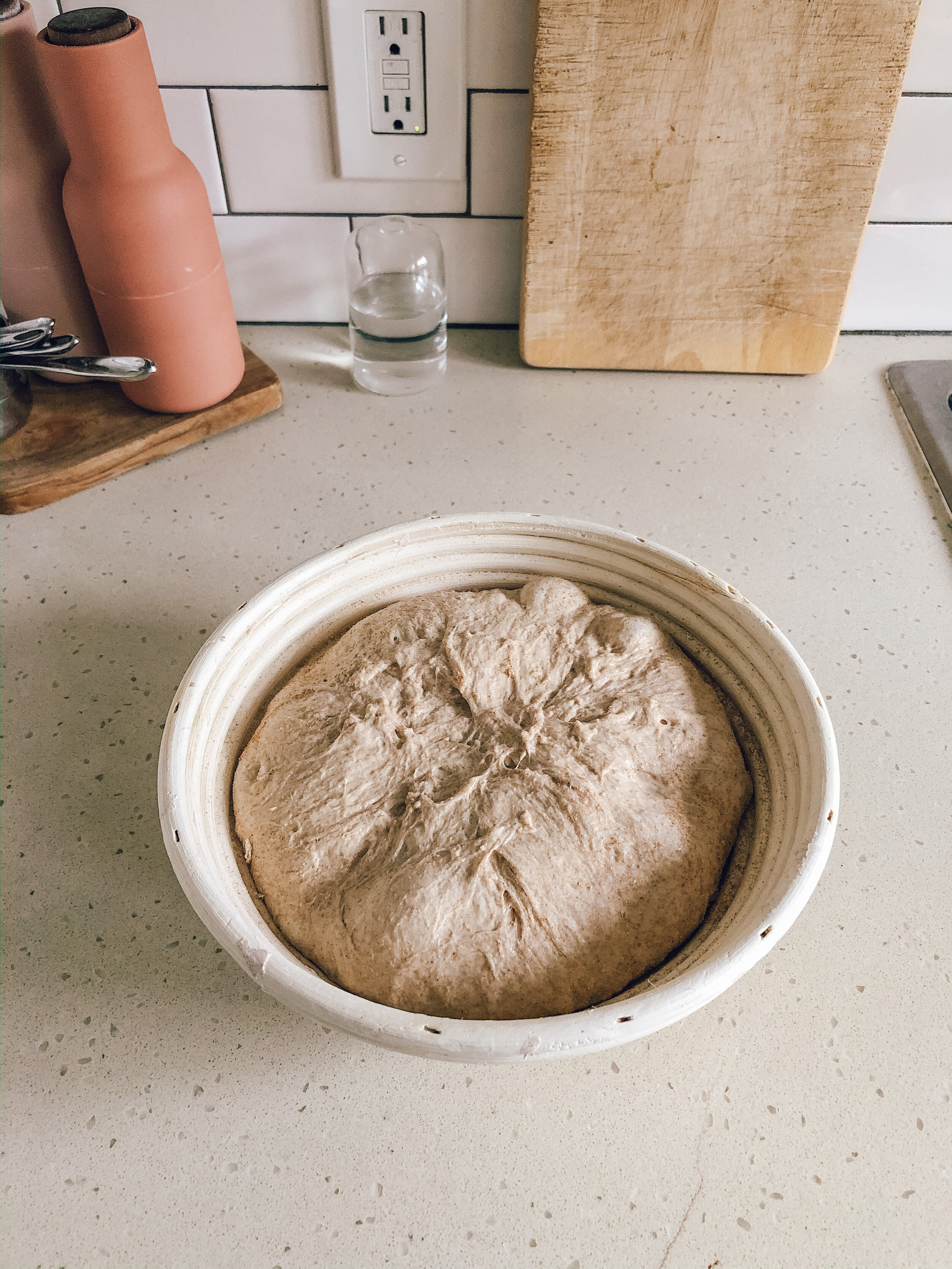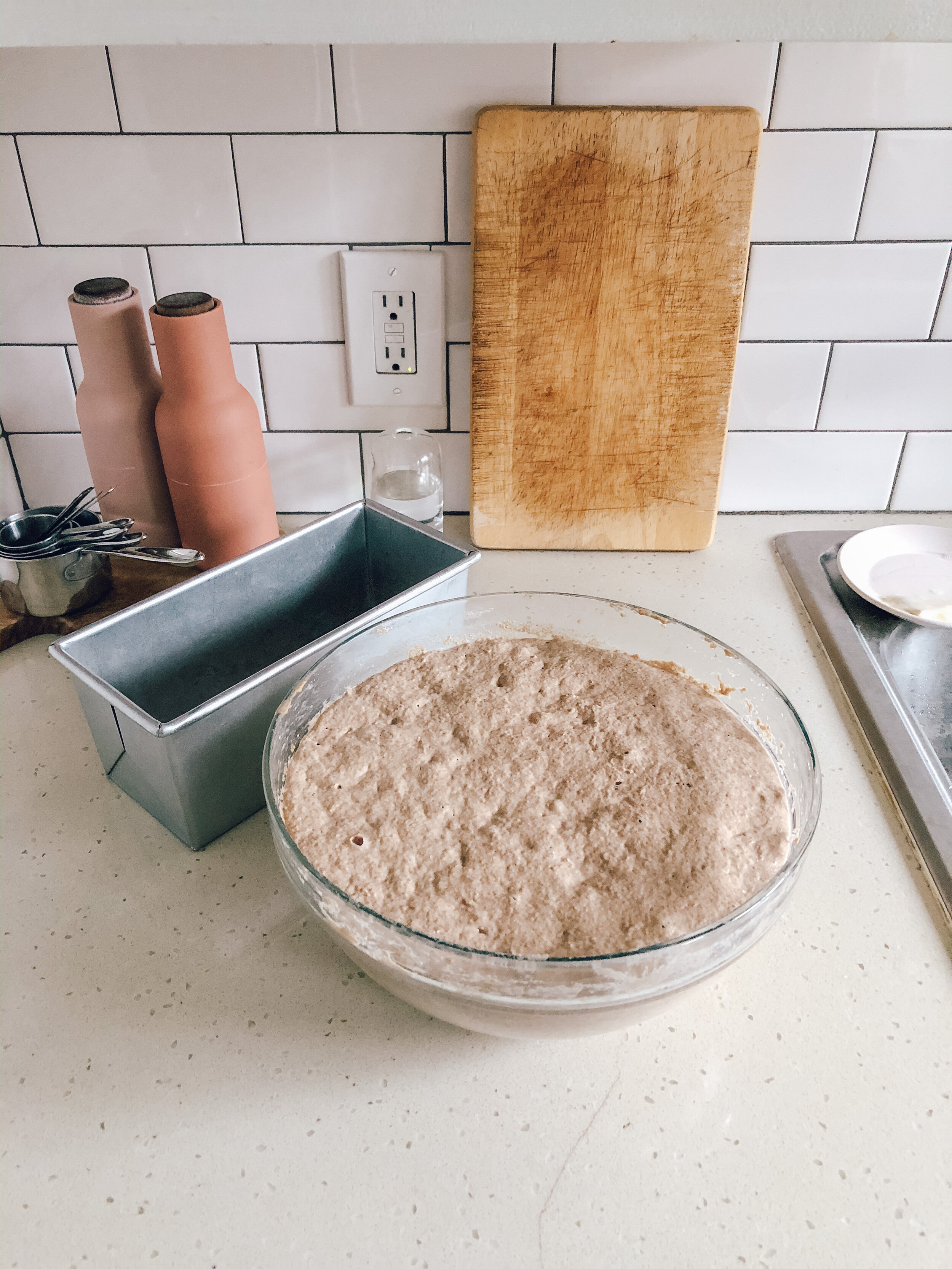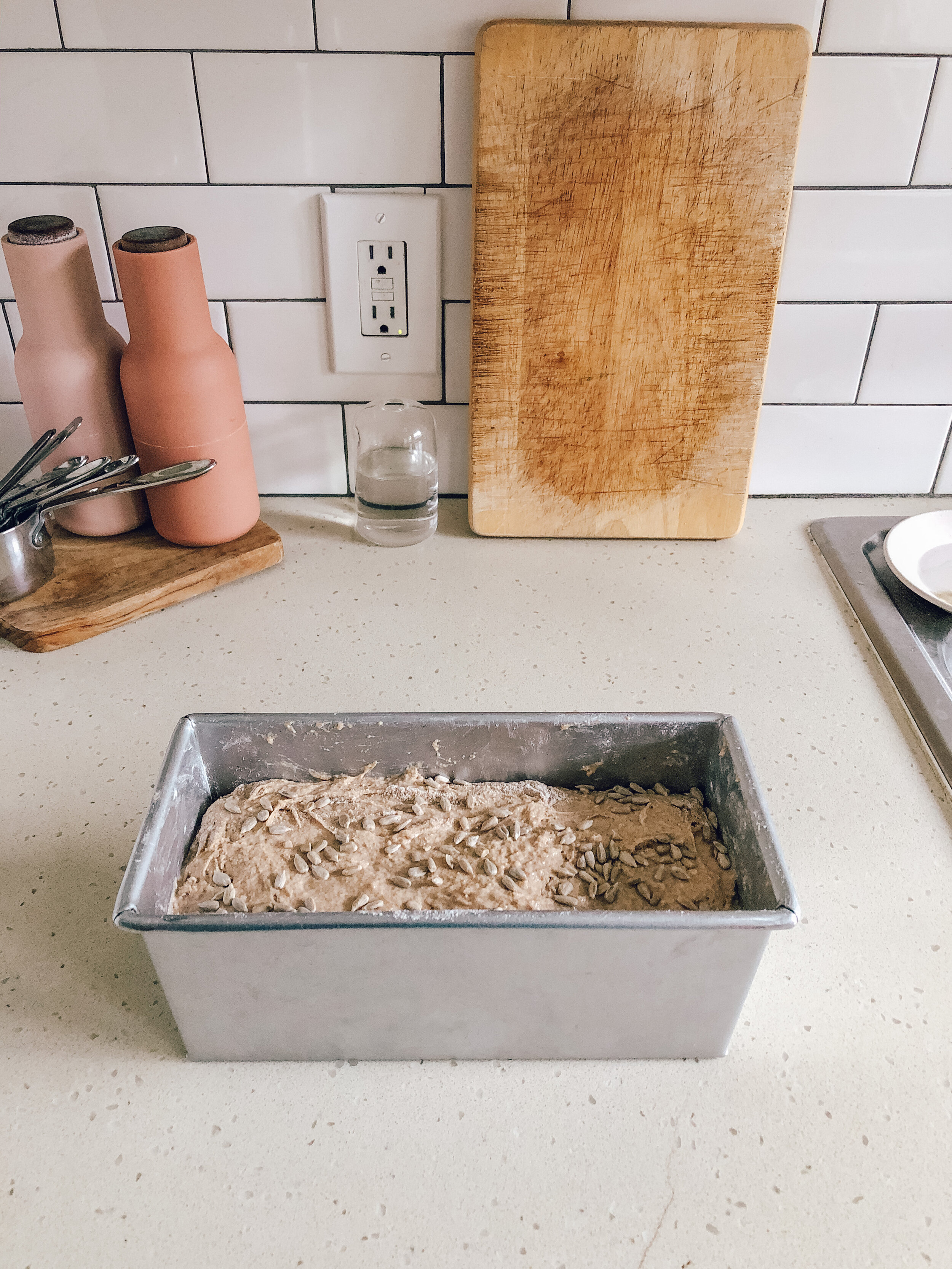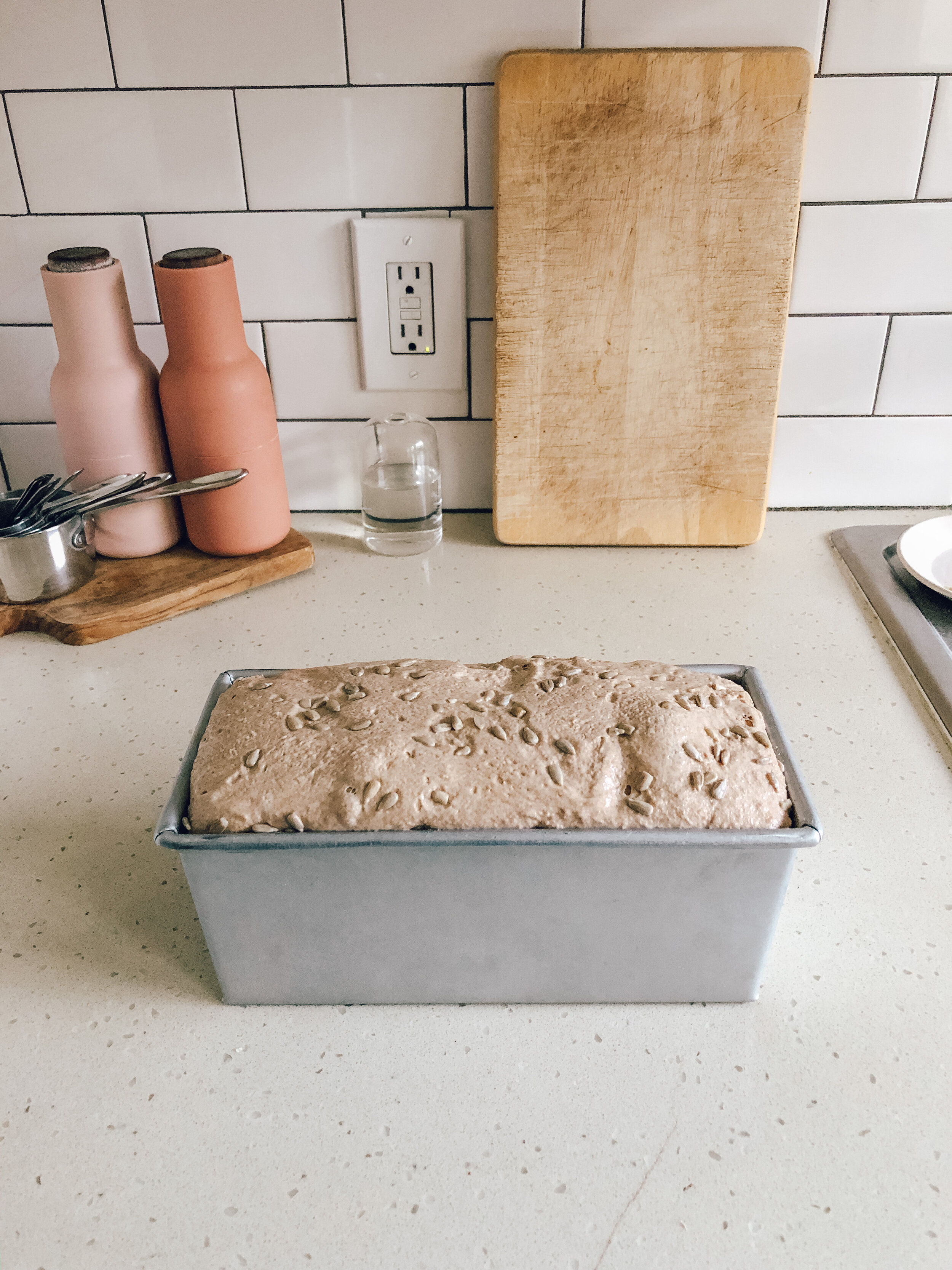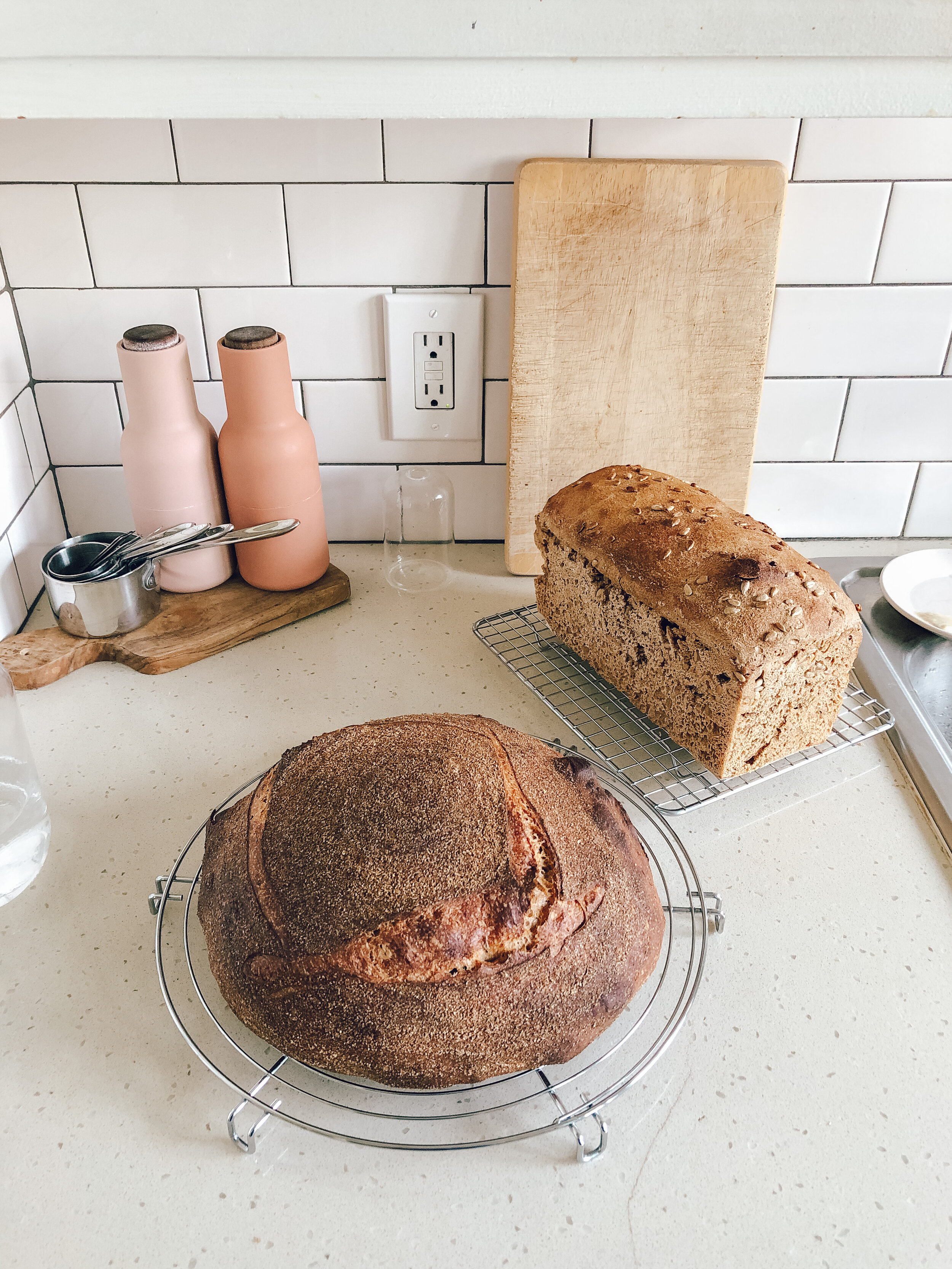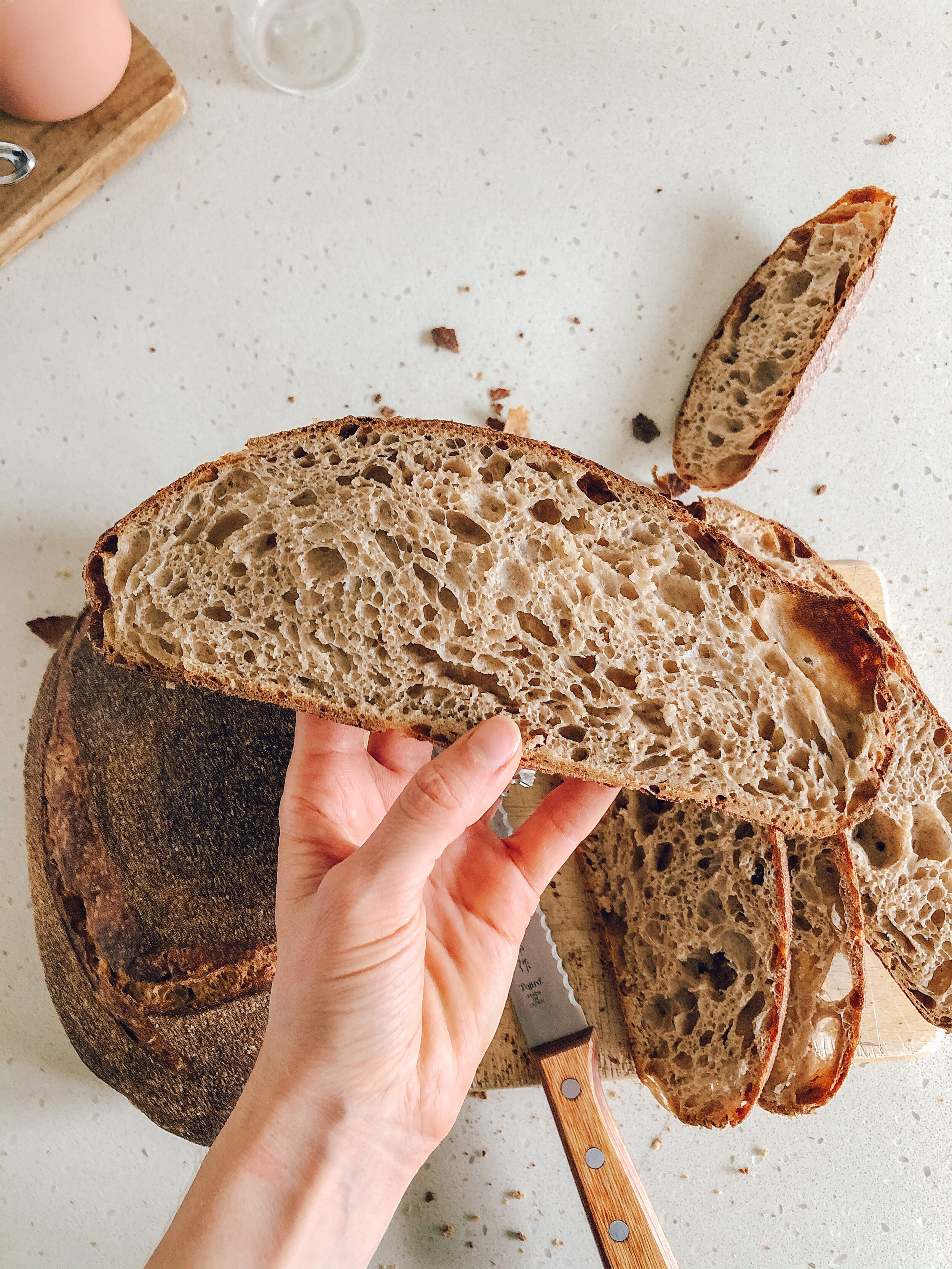My Sourdough Practice & Resources List
Pinch me. Here I am, talking about sourdough—something I never thought I’d do! I stumbled into sourdough a few years ago when a friend sent me some of her starter and her sourdough baking book (hi Emilie!). I failed over and over at getting a loaf to rise with any amount of whole grains, took massive breaks, and would dig into resources trying to learn more about how baking bread worked. I would return, bake slightly better loaves, have a big flop, and take another break.
Last summer I decided we weren’t going to purchase sourdough any longer until I learned how to bake proper loaves myself. We really love bread so this was a very good motivator. Every week I baked a loaf. Sometimes it was great, other times I would play with the steps a bit too much and not read the dough properly—and it would do something funny. But every week I baked and every week we ate whatever I made.
Magically, the loaves got better (oh what grace), and my understanding of how different flours, temperatures, and techniques deepened. This, in my mind, is how you learn to bake sourdough bread. You simply start baking. It was an important practice, and still is, of patience and constant learning (read: humbling). I believe it is really important to have a project that is just for your hands, eyes, and ears. Something that slows you down, allows you to tuck away the camera, dig deeper into a practice that nourishes your creative mind, and interact with something living (it is alive). Sourdough has been that for me, and if possible, I would love it to be for you too.
I’m not looking to be a teacher of sourdough, but I’m happy to share a few things and link up the wazoo to others who are wonderful at sharing their knowledge. This is why I showed up here with some photos, resources, and words of encouragement. Because I really do want all of you who feel the sourdough calling to dive deep into the doughy abyss and enjoy baking your own bread. Thank you for all of your messages requesting I do so, this post is for you :).
I sometimes post snaps of what I’m making with you via stories on Instagram, so be sure to follow me there for more occasional sourdough content. I may not give all of the details, but I try to share some, in hopes that it will make you salivate enough to experiment on your own with bread making. I have faith in you, fear not, and please dive in with abandon! Let’s talk sourdough.
Meet Kip, the starter
What is a sourdough starter?
A sourdough starter is made of only flour and water. It is left to ferment and wild yeasts gather to create the bubbly life you see above.
How did you make your starter?
I’m very lucky to have had a friend who gave me a small amount of her starter a few years ago, which she had inherited from a friend too. I only needed to feed it from that point forward. Asking a friend who bakes for a scoop of their starter (or asking a local sourdough bakery if they will sell you some) is a great way to start out with a healthy, more mature starter. Otherwise you can start from scratch—I link to guides below.
How do you feed it?
I normally bake about once a week and therefore keep my starter in the fridge when I’m not using it (his name is Kip). I will take Kip out the night before I want to bake and discard all but 50g, feeding him 50g of water and 50g of whole grain dark rye flour. If in the morning he isn’t sweet smelling and bubbling like I’m use to, I will discard and feed him again that morning, and then in the evening once more, to strengthen him before baking the following morning instead. Typically he goes 12 hours between feedings, but in the summer it can be even less. The warmer the temperature, the quicker the fermentation.
Once I’ve taken what I need for baking, I will feed 50g of the leftover starter another 50g of water and 50g of rye flour, give it a mix, and place Kip in the fridge until I bake next. I use a Weck jar as shown above with the glass lid sitting on top without the rubber seal or clips, so it can breathe.
Why rye flour?
Rye is a highly nutrient-dense flour, which as far as I’ve learned makes the yeasts very happy! This flour will give you a highly active starter and my breads have been better for it since switching to feeding with dark rye exclusively last summer.
Sourdough Starter Resources:
Flourist: Making + Maintaining a Sourdough Starter
The Perfect Loaf: 7 Easy Steps To Making An Incredible Sourdough Starter From Scratch
Also see additional sourdough starter resources under the list here: Sourdough Starter Guides
Flours
I highly recommend searching the big wide world of organic, freshly milled flours! I am still experimenting too, there is so much to be discovered. Here are a few flours I have used thus far and really enjoy.
My baking really took a turn for the good when I began researching and investing in quality flours that were made for bread baking. Once you get a handle on baking with the go-to flours, its easier to use your new knowledge to lead you to experimenting with more unique grains too.
Janie’s Mill
High Protein Bread Flour
Artisan Blend Bread Flour
Turkey Red Flour
Red Fife Flour
Dark Rye Flour
Einkorn Flour
Central Milling
Organic Artisan Bakers Craft Plus
Organic Type 85 Malted
Flourist
Whole Grain Spelt Flour
Sifted Spelt Flour
Grist & Toll
See their selection here.
*Also see an extensive list by Sarah Owens here.
Tools
I use very few tools in my baking, there are definitely plenty you could acquire if you choose to. I only have one proofing basket, a scale, a pullman loaf pan (the 9x4 small pan), a dough scraper, and a packet of razor blades for scoring. I’ve baked in a dutch oven previously and now use a Challenger Bread Pan. Here are more resources for baking tools to peruse! I vote for starting simple, you really don’t need too much to bake bread.
Breadtopia: a plethora of baking supplies
The Perfect Loaf: a comprehensive tools list
Flourist: tools for sale and books
My (Rough) Steps
(Best viewed on a desktop, the captions cut off otherwise, very sorry!)
Above is a little step by step of me making two loaves of bread the other week. One was a round boule made with a mixture of wheats from Janie’s Mill, and the other a whole grain spelt loaf following the wonderful recipe by Tim (doubling it and baking it twice as long).
My baking schedule and recipes change with almost every bake. In sourdough the name of the game is learning to read your dough. The strength of your starter, the types of flours used, the temperature of your kitchen that day, the humidity in the air, and how you handle the dough personally will all contribute to variations in a loaf. I can do the same things to a tee between two loaves and have them come out very different. Part of that is due to my level of knowledge at this time, but I hear even experienced bakers say they can have these experiences sometimes too.
I want to encourage you if you are interested in getting into the wonderful, wild world of sourdough to not be afraid. Let each loaf be the learning process you need. Rather than aiming for perfection, aim to learn, and you will be gifted with delicious bread of all shapes and sizes. Get your hands into some dough and dig into the resources list below to get you excited, to guide you, and to inspire you to bake bread.
The Learning Resource List
Dive into this entire page of guides by the Perfect Loaf.
See a list of all his sourdough recipes here.
And make sure to follow him on Instagram too.
This video on how to make sourdough with Sarah Owens.
Watch: 15 mistakes most sourdough bakers make.
Flourist has oodles of sourdough recipes to get you started too.
Always learning tons from Sourdough Tim on Instagram. (Also, Jodi and James.)
Tartine Book No. 3 is my favorite book, I highly recommend.
Give Challenger’s ingredient directory and bakers glossary a read, so helpful.
Gluten free? I have no experience with this, but Sophie does! See her two posts here and here.
Ps. Nutritional benefits of sourdough:
I would love to spend more time on this one day, but here are a few words from The Sourdough School.
Happy Fermenting & Baking!
x Jessie




